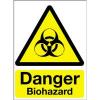Hi everyone,
There is a small debate about Listeria in drains and where it comes from. One school of thought is that it is just simply in drains and we have to be careful that it does not come out of the drains; the other school of thought is that it is being carried into the factory from outside and is concentrating in drains since that's where everything from the floor ultimately ends up. Once in the drain, it can create biofilm and multiply, and we have to be careful that it does not come out.
I am trying to find articles that address this but am having a hard time. Mostly I find articles that talk about how to get rid of listeria in the drains, but none seem to address where it is coming from.
It doesn't seem like a big deal, but I am a firm believer that Listeria comes in from our shoes and concentrates in the drains, so even if we clean all the drains regularly, we are still not addressing the root cause. A good preventive program, in my opinion, would not only address regular drain cleaning, but also foot baths etc. that prevent contaminants from outside ever entering the plant floor.
Any thoughts? Anyone find any articles I can use to support or disprove my claim?
Thank you!



















